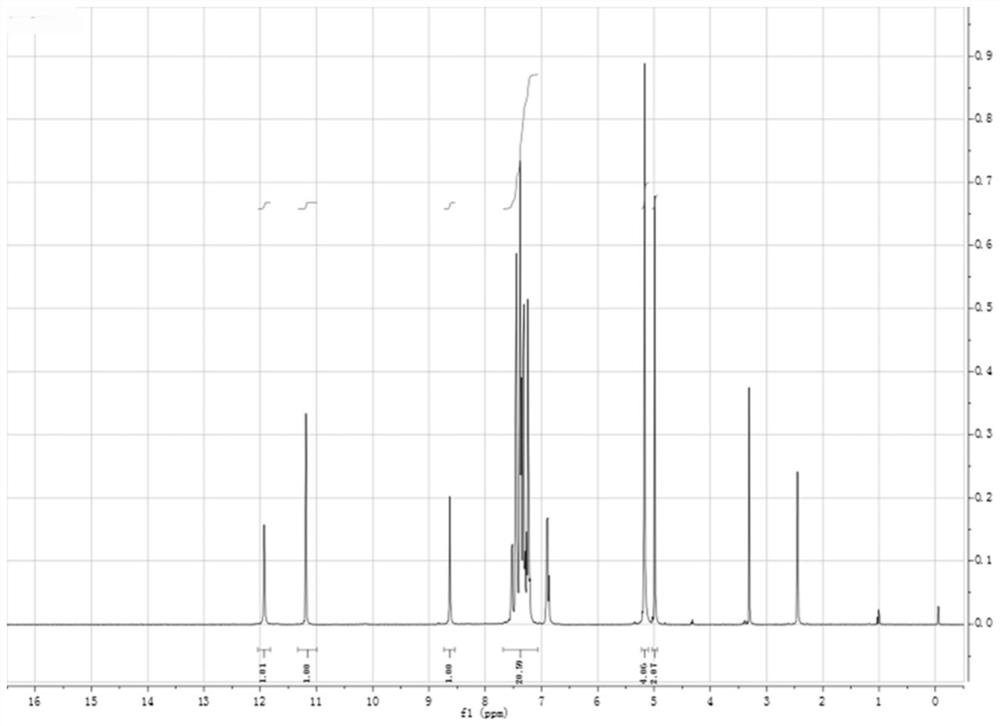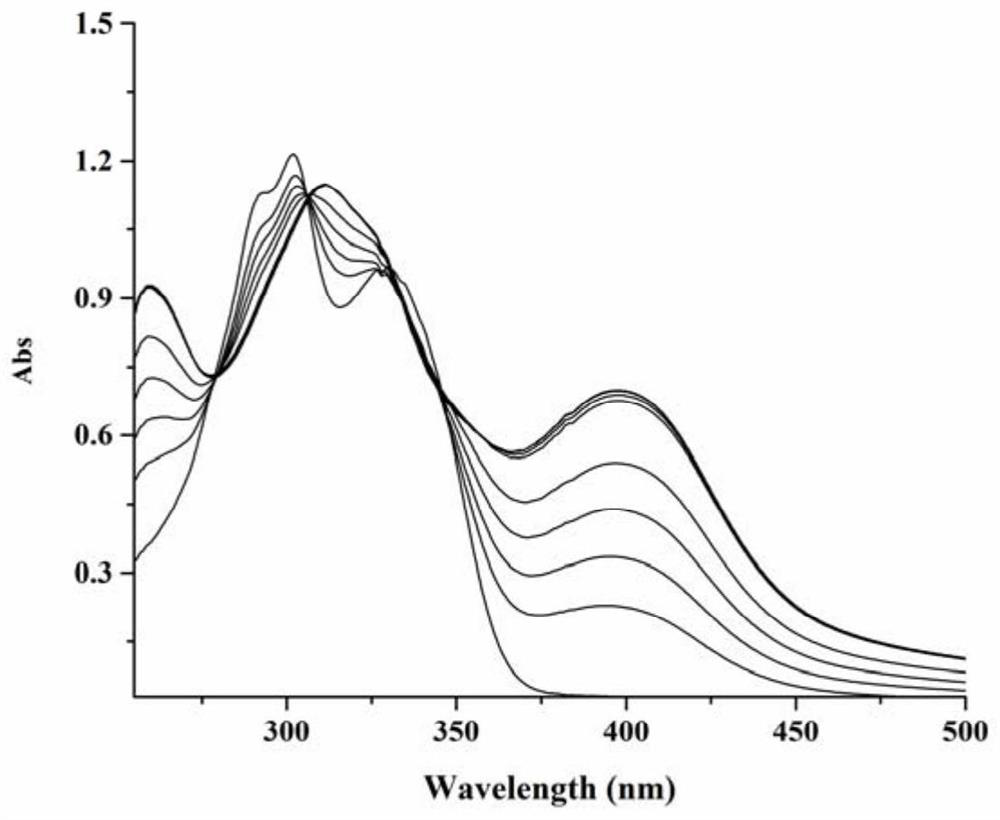Zinc-aluminum ion recognition fluorescent probe as well as preparation method and application thereof
A technology of ion recognition and fluorescent probes, applied in the field of fluorescent probes, can solve problems affecting the accuracy of detection results, fluorescence quenching, etc., and achieve the effects of improving diagnostic accuracy, easy cell uptake, and low cytotoxicity
- Summary
- Abstract
- Description
- Claims
- Application Information
AI Technical Summary
Problems solved by technology
Method used
Image
Examples
Embodiment 1
[0033] Example 1: Synthesis and characterization of fluorescent probes
[0034] The synthesis of ligand fluorescent probe HL is as follows: figure 1 shown. It is obtained by a simple condensation reaction of 3,4,5-tribenzyloxybenzohydrazide and salicylaldehyde. 3,4,5-tribenzyloxybenzohydrazide is prepared in two steps using methyl gallate as the initial raw material. First, methyl gallate and benzyl chloride are used as an acid-binding agent in potassium carbonate. Substitution to methyl 3,4,5-tribenzyloxybenzoate followed by hydrazinolysis of methyl 3,4,5-tribenzyloxybenzoate to 3,4,5-tribenzyloxybenzoyl Hydrazine, and at the same time, the ligand fluorescent probe was characterized by NMR and other means to confirm that we had obtained a very pure product, and the fluorescent probe NMR characterization was as follows: figure 2 shown.
[0035] Synthesis of ethyl 3,4,5-tribenzyloxybenzoate (corresponding to a)
[0036] Ethyl 3,4,5-trihydroxybenzoate (4.6 g, 0.025 mole) a...
Embodiment 2
[0041] Example 2: Research on Spectral Behavior and Specificity of Fluorescent Probe HL in Response to Zinc and Aluminum Ions
[0042] A 2 mM methanol solution of the fluorescent probe was prepared, and then diluted 100 times to obtain a HL methanol solution with a concentration of 20 μM. Various metal ion aqueous solutions with a concentration of 20 μM were obtained by using different metal nitrate configurations. The aqueous solution of metal ions was added dropwise to the 20 μM HL methanol solution, and the changes in the ultraviolet absorption spectrum and fluorescence emission spectrum of the fluorescent probe methanol solution were recorded. After the titration is completed, continue to drop 20 μM zinc and aluminum ion aqueous solution in the above mixed solution, and further record the change of the fluorescence spectrum. At the same time, the HL solution with a concentration of 20 μM was added with constant concentrations of zinc and aluminum ion aqueous solutions, an...
Embodiment 3
[0043] Example 3: Responsive imaging and monitoring of zinc and aluminum ions in cells
[0044] PC-3 prostate cancer was divided into 2 groups and spread in 12-well cell culture plate at a cell density of 80,000 cells per well, and adhered to the wall overnight. After the cells adhered to the wall, the old medium was removed, and one group was added with pure fresh medium for culture, and the other group was added with fresh medium of 20 μM zinc ions and aluminum ions respectively, and then continued to incubate for 30 minutes. After the incubation is complete, remove the medium, wash the cells twice with fresh medium, add 20 μM fluorescent probe medium solution (DMSO is the most co-solvent, the concentration is less than 1 / 1000) to the cells in the two groups, and incubate the cells again After 30 minutes, the culture medium was removed, and the cells were washed twice with PBS, and the cells were observed with a fluorescence microscope. The results were as follows: Figure ...
PUM
| Property | Measurement | Unit |
|---|---|---|
| melting point | aaaaa | aaaaa |
| melting point | aaaaa | aaaaa |
Abstract
Description
Claims
Application Information
 Login to View More
Login to View More - R&D
- Intellectual Property
- Life Sciences
- Materials
- Tech Scout
- Unparalleled Data Quality
- Higher Quality Content
- 60% Fewer Hallucinations
Browse by: Latest US Patents, China's latest patents, Technical Efficacy Thesaurus, Application Domain, Technology Topic, Popular Technical Reports.
© 2025 PatSnap. All rights reserved.Legal|Privacy policy|Modern Slavery Act Transparency Statement|Sitemap|About US| Contact US: help@patsnap.com



